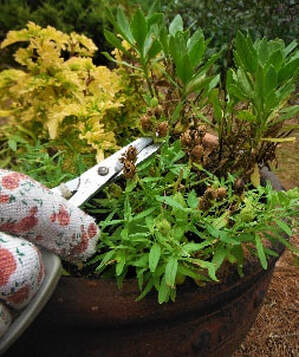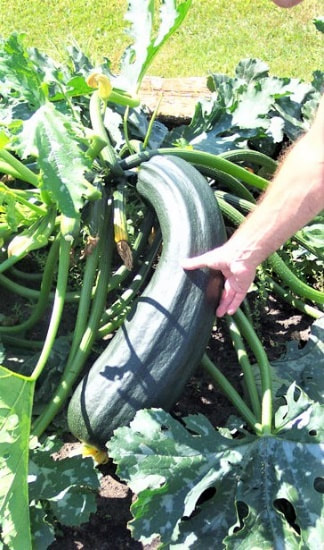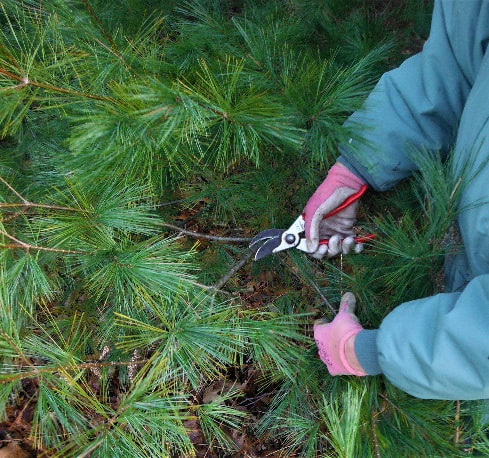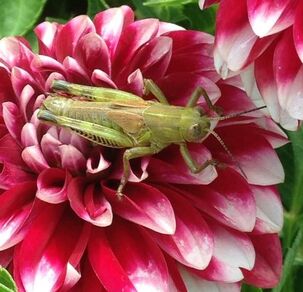Horticultural Hints for August!
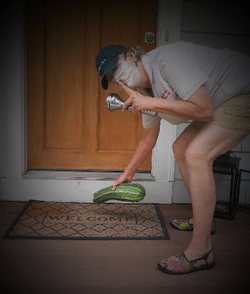
August 8th is National
'Sneak Some Zucchini
Onto Your Neighbor's Porch Night'!
We need a gardening tradition that everyone can celebrate
‘just because’....so DO participate!
|
Reinvigorating annuals and containers.
To keep the annuals blooming and looking at their best until frost, you need to deadhead and keep them pruned into shape. When you water annuals, particularly those in containers, remember to add a weak solution of liquid plant food. The timed released fertilizer you added in spring or early summer has been depleted. August is when we get to enjoy the bounty of our vegetable gardens. Regular picking is vital to keeping the harvest going as long as possible.
If plants get overlooked (and oversized) they will start concentrating on producing seeds instead of more food for you. When Mother Nature is too generous, share the bounty with your friends and neighbors. And, as you pull spent vegetables, plant lettuce, spinach, arugula and other ‘leaf’ vegetables for a fall harvest. Of course, if one zucchini happens to ‘get away’ from you, you can always use it productively (see article at right). |
Put the plant food away until next year! Except for annuals, stop fertilizing. By mid-August you should no longer be fertilizing any perennials, trees or shrubs. This year’s growth on your plants needs time to harden off before the cold weather begins. However, for annuals and plants in containers, keep fertilizing: you want them to bloom until they’re hit by frost.
Garden maintenance. Cut back your perennials that have finished blooming. They’ll look neater and many will surprise you with a second bloom when prevented from setting seed the first time. Keep picking your vegetable gardens. By picking, you are preventing your plants from going to seed so they keep producing produce. If you have more vegetables than you can use, offer it to friends or call a local food cupboard and ask for their drop-off days. Replant this month for a more bountiful fall crop: green beans, peas, cucumbers, carrots, kohlrabi, summer squash, early sweet corn, green onions. Water seeded
areas by hand daily until the new plants are up and a couple of inches tall. Cover the newly planted seeds with row cover to help keep them cooler and out of pecking range of birds. You can take the row covers off when the plants are several inches tall. |
August is when fungal diseases become a nuisance. The downside of this summer’s humid weather is that you need to be extra vigilant in scouting out fungal diseases. These diseases spread rapidly; propelled from one leaf to another and from one plant to another by insects or during rain or watering. Whether you choose organic or inorganic methods of treating diseases, best results occur when you begin as soon as the problem appears and continue until you are certain it has been eliminated or you have disposed of the plant. If a plant can’t be saved, cut it, bag it and put it in the trash. But, don’t compost it (the disease may survive the process) or throw it into the woods. And, don’t spread the disease – clean your clippers with a disinfectant wipe before using them again.
July’s bountiful rains were a gift for gardeners. Unfortunately, they
were also a blessing for the grubs in your lawn. When the soil dries out and stays dried out for lengthy periods (as happened last year) grubs often die from lack of moisture. This year grubs are likely to be back. But before you begin treating your lawn with one of the chemicals sold for that purpose, be aware of what you are doing. Products that actually kill grubs are dangerous to you, your family, pets and every other living thing that walks across your lawn. Lawns can be reseeded and fertilized in the fall repairing any damage without danger to anyone. |

